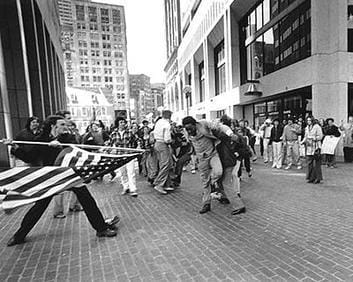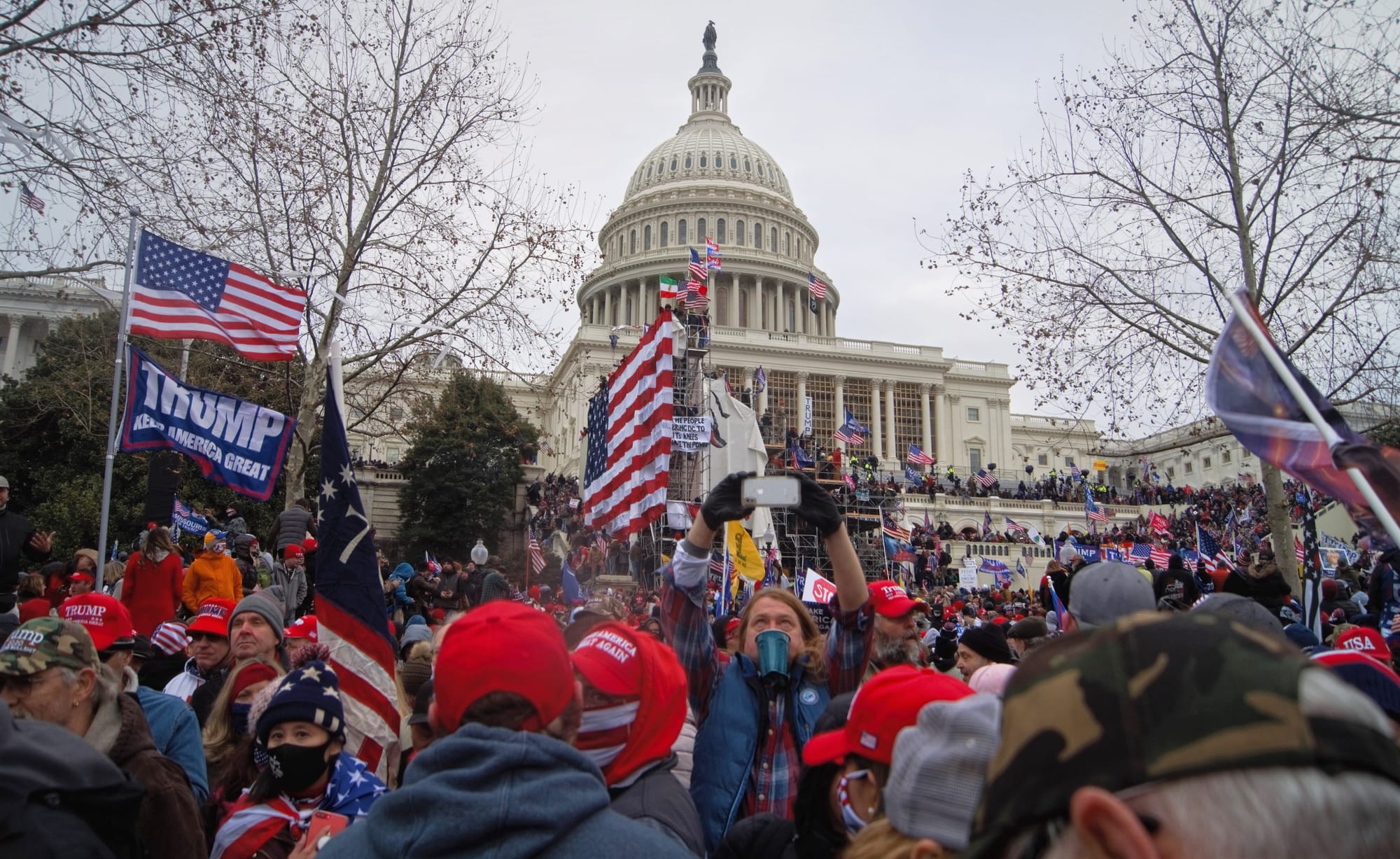German American Bund parade on East 86th St, New York City, October 30, 1937
On June 14, 1777, the Second Continental Congress adopted the flag of the United States with a resolution stating “that the flag of the thirteen United States be thirteen stripes, alternate red and white; that the union be thirteen stars, white in a blue field, representing a new constellation.”
Every day, millions of children recite the pledge of allegiance to that flag. The pledge is recited at the beginning of every session of Congress, at state and local government meetings, and in private and civic organizations across the nation.
I have stood at attention and saluted the flag countless times during my military career, and I have sung the national anthem at ceremonies and sporting events as the flag waved for all to see. I am proud to be an American.
But the flag is only a symbol, and its meaning to each of us can be as different as our individual experiences. To some, the flag represents the best that America can be — the promises of freedom, equality, and fairness set forth in the Declaration of Independence and the U.S. Constitution. To others, the flag is a reminder that not everyone has benefited equally, and that in our nearly 250-year history, freedom for some has not meant freedom for all.
The flag can be used to celebrate our unity, or to intimidate and divide us.
On February 20, 1939, a large Nazi rally was held at Madison Square Garden with over 20,000 attendees. The so-called ‘Pro American Rally’, held by a national organization called the German American Bund, displayed a giant image of George Washington draped between huge American flags and swastika banners. The event not only co-opted the flag, but also used The Star-Spangled Banner and the pledge of allegiance in support of Adolf Hitler, antisemitism, white Christian nationalism, and European fascism. The Bund was attempting to redefine the symbols of America to promote white supremacy. But thousands of protesters outside the event disagreed with the Bund’s propaganda and American voters never allowed the fascist idealism to take hold in the United States.
During the Civil Rights protests in the 1960s, the American flag was used alongside the Confederate battle flag as a symbol of white supremacy against racial equality. In 1976, Pulitzer Prize winning photographer Stanley Forman captured an image of a white man using the flag as a weapon against a Black man during the Boston confrontations over busing and school desegregation.

Following the murder of George Floyd in the summer of 2020, I attended several local protests calling attention to the unacceptable instances of police brutality that are all too common. I remember pickup trucks racing loudly up and down the street flying large American flags with an obvious threatening message to the Black Lives Matter protesters.
And at the January 6, 2021 attack on the U.S. Capitol, the American flag was used as a weapon against the Capitol police, and against the most fundamental part of our form of self-government — the constitutional process of electing a president and the peaceful transfer of power that has marked our form of government since George Washington turned over the presidency to John Adams.

But for some of us, the flag represents all that is good in America. That we are a nation founded on the principles that all are created equal. That our Constitution begins with the words “We the people of the United States, in order to form a more perfect union…” That we are better when we are united for the benefit of all. And that we, as a government of the people, have continued to work towards justice, domestic tranquility, the general welfare, and liberty for all.
So, like it says in the pledge of allegiance, the flag of the United States stands for our democratic republic form of government. A government whose power is derived from the people.
Dissent and peaceful protest, a right guaranteed by the first amendment, is one of the most fundamental acts of American patriotism. It is particularly patriotic when protesting violence, corruption, and injustice. Taking a knee during the playing of the national anthem to protest racial injustice isn’t disrespectful to our veterans, it is honoring the veterans for helping protect that right. Marching for the rights of others and gathering on campuses to call for an end to war is more American than reciting the pledge of allegiance will ever be.
Respect for the flag is not compulsory. The Supreme Court has ruled that children cannot be compelled to recite the pledge. Burning the flag in protest is protected speech.
And that’s the beauty of the government for which our flag stands. We can state how we feel, we can protest the direction of our country, we can disagree with our elected leaders, and we can petition our government for redress.
The Constitution of the United States guarantees each one of us the right to have our voices heard, through speech, through protest, through the press, and with our vote. And that right belongs to each of us, no matter our race, ethnicity, religion, gender identity, sexual orientation, or any other individual characteristic that makes us who we are — unique individuals who together make this country the best it can be.
I’ve seen social media trolls responding to the rainbow pride flag with an image of the stars and stripes and the words: “This is my pride flag.” Pride comes in many colors, and the American flag belongs to all of us.
Yes, I’m proud to fly the American flag — not because of some misconstrued narrow view of patriotism for a privileged few, but because of the promise it holds of a more perfect union for all.
Ted Miller grew up around the world but now lives in Richland with his wife. He’s a runner, actor, singer, nuclear engineer, and graduate of the U.S. Naval Academy.
Ted believes that if more people worked toward love and understanding instead of giving in to fear and divisiveness, the world would be a better place.


